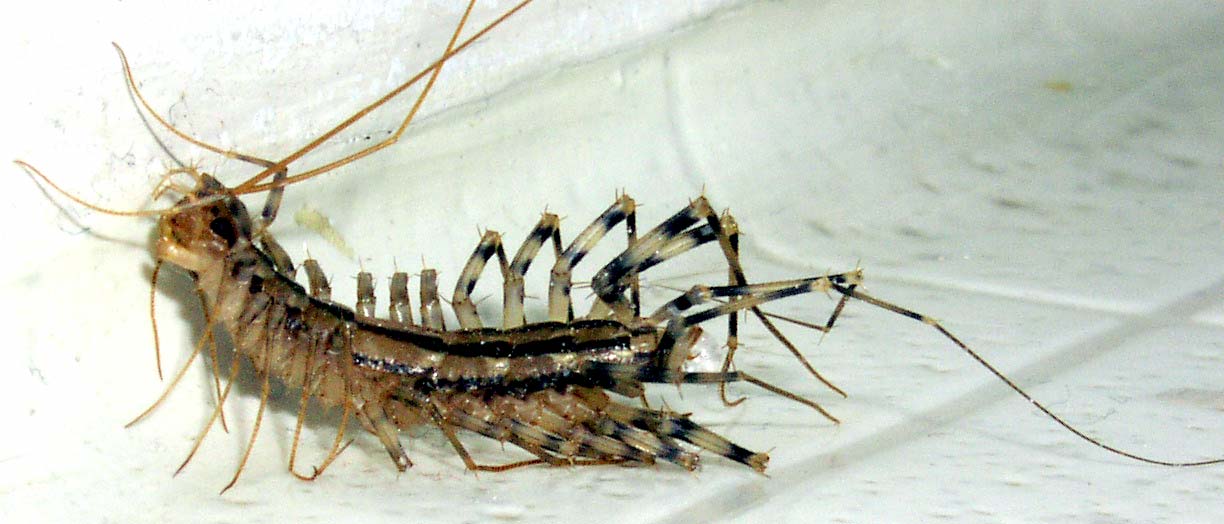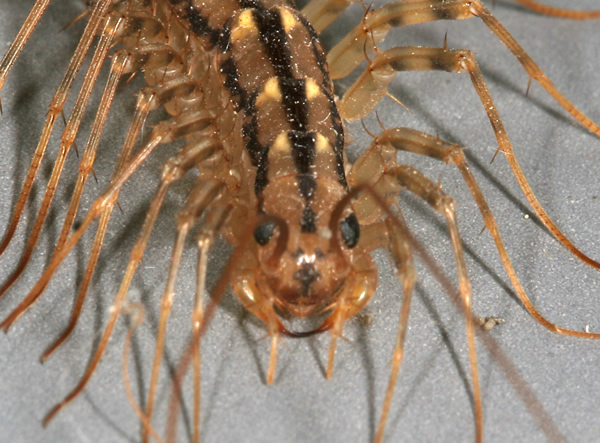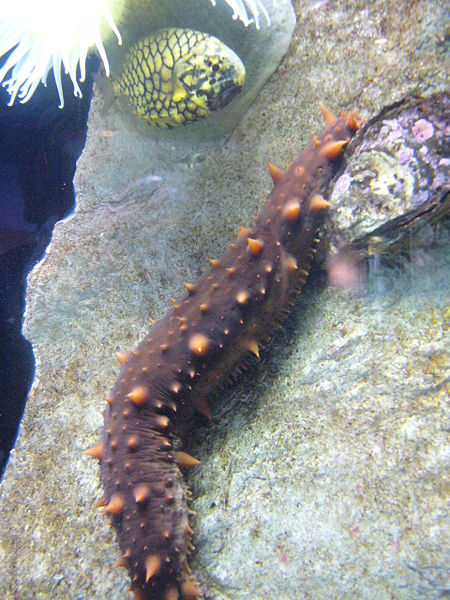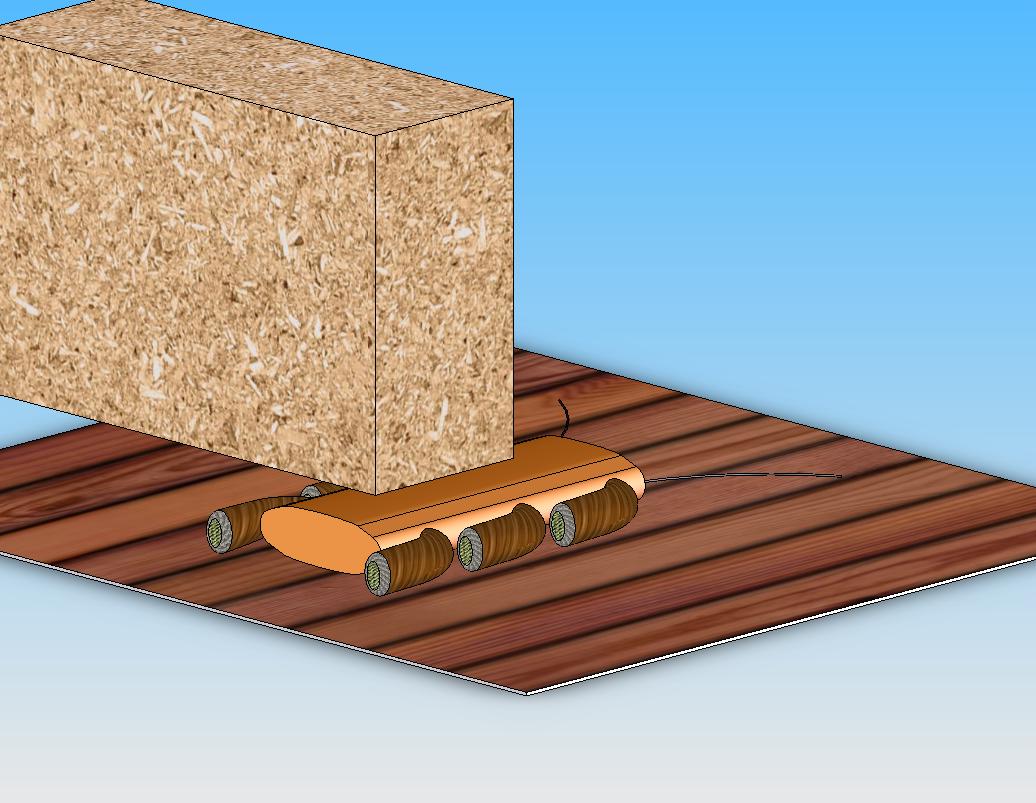new web: http://bdml.stanford.edu/pmwiki
TWiki > Proposals Web>OldProposals>SoftBot (31 Jul 2010, DanAukes)
Proposals Web>OldProposals>SoftBot (31 Jul 2010, DanAukes)
Soft Bot concepts |
Peripatus on a leaf 
|
Link to DSO site and notes
- Teleconf. setup: https://www.freeconference.com
- (26 June 07; 13:00PDT) Dial-in Number: 1-712-580-1100, Access Code: 15711
Organizer: *177562
- (26 June 07; 13:00PDT) Dial-in Number: 1-712-580-1100, Access Code: 15711
Current Draft
Notes
- Why start large and go small? Why not start small and stay small?
- As Zakin clarifies, they really want soft and deformable
- Greater speed when larger
- Better able to cope with environment at small length scales (holes/crevices in ground)
- Larger workspace for locomotion or manipulation of payload
- Snakes (which can go through small holes, have a respectable payload and can travel rapidly and even climb, cannot manipulate...
- Compelling reasons to use H202?
- Relatively high energy density
- No sealed hydraulic or pneumatic cylinders
- Flexible fuel tank as part of the "novel soft payload"
- Inherently suited to soft robot - no need for transmission, motor, etc.
- Payloads
- Fuel for chemical actuation
- Battery for electronics and non-chem actuation
- Actuation hardware (valves, motors, SMA, etc.)
- Electronics/control
- Camera or other hardware
- Other?
- Locomotion
- Phase I milestone is .25 m/minute or 4mm/sec, which is REALLY SLOW
- Probably allowing for novel chemical morphing locomotion schemes.
- A 10cm inchworm or caterpillar can move significantly faster than that
- Which is why Onycophorans will probably be an OK model
- Actuation Types
- Mark Yim and Polybot style - probably not what they want, but would be feasible for task, if not scale
- SMA - slow, but they're ok with slow. Also very low energy efficiency (about 2%)
- EPAM - possible... could work with with octopus or amoeba structure to squeeze radially, producing axial extension
- Variable stiffness chassis?
- Lots of discussion in BAA about rheological fluids, modulus-changing, phase transitions, etc.
- We have worked with ER and MR fluids in the past. They could provide advantages for structures that lock up when the fluid is energized but become very deformable when it is not.
- Perhaps they're focused on a normally stiff robot that can "melt" when necessary, more than a flexible robot that can change locomotion methods?
- A cartoony character (Scooby Doo, perhaps) came to mind... walking on tiptoes normally, and then switching to being prone with sprawled legs, but still moving on tiptoes
Soft robot literature
Denis Hong at Virginia Tech. has an amoeba robot concept:- http://dsc.discovery.com/news/media/amoebabotvideo.html
- WHOLE SKIN LOCOMOTION INSPIRED BY AMOEBOID MOTILITY MECHANISMS, ASME DETC2005-85419, Ingram and Hong.
- Mark Ingram MS thesis: http://scholar.lib.vt.edu/theses/available/etd-09182006-152023/
Bio Links and Background Information
Velvet Worms (Onycophorans)
Berkeley site: http://www.ucmp.berkeley.edu/onychoph/onychophora.html Other sites: http://www.fs.fed.us/r8/caribbean/wildlife-facts/2002/wildlife-facts-april-2002.shtml Velvet Worms date back 400 millions years and may be a missing link between the Arthropods (Insects and Crustaceans) and Annelids (soft bodied segmented worms, including earthworms). Although wormlike appearance and having a segmented body, the Peripatus have legs which move in similar fashion to the eyes of a snail and are able to be extended by variations in internal blood pressure. Shy creatures, able to hide in incredible tight crevices, these “velvet worms” are rarely seen in their natural habitat but could be found in leaf litter, earthen tunnels and foliage, under stones, and in fallen trunks. http://www.kingsnake.com/westindian/metazoa2.html Bunch of good pictures on this site + a quote: The largest are only about 20 centimeters in length. Their pliable and soft integument have earned them the name of "velvet worms". Indeed, an onycophore is so flexible that it is able to "filter" (there is no better word to describe it) through incredibly narrow spaces.
Scutigera coleoptrataHouse centipede. Fast predator that is able to hide under rocks & etc. This is the other end of the spectrum of designs we could consider, with distinct legs, high running speed. http://www.math.umd.edu/~schris/scutigera.shtml http://en.wikipedia.org/wiki/House_centipede http://entomology.uark.edu/museum/house_centipede.html |
Scutigera: 
|
Sea Stars (starfish)and other Echinodermata
| Class: Asteroidea, Phylum: Echinodermata http://en.wikipedia.org/wiki/Starfish These creatures use a water vascular system for propulsion and for applying (large) forces to open mussel shells. Other potentially relevant echinodermata include sea cucumbers (Holothuroidea), which have lost much of their skeleton They have remarkable powers of regeneration. Echinodermata have an endoskeleton consisting of many ossicles, which could be roughly analogous to the small discrete components that our robots will have. "The connective tissue is mutable and its consistency is under nervous control." This might be something one could do with ER fluid in a spongey matrix... Lab on "movement by fluids" -- http://www.erin.utoronto.ca/~w3bio325/325lab2.html |
sea cucumber
|
Polychaeta (annelid worms)
http://en.wikipedia.org/wiki/Polychaete -- these creatures have been the subject of some robotics work at SSSA in Pisa. They have an excellent ability to traverse sandy terrain, navigating between rocks.- http://en.wikipedia.org/wiki/Polychaete
- http://en.wikipedia.org/wiki/Image:Polychaeta_anatomy_en.svg -- good diagam of interior structure.
Caterpillars
Another possible model for a soft bot that can morph between an "expanded" and an "extruded" state:- Trimmer_ICRA07_Paper.pdf: Barry Trimmer caterpillar paper
- Trimmer_ICRA07_Slides.pdf: Barry Trimmer caterpillar slides - didn't see that they also had robot content
- peripatus.pdf: Peripatus (Onychophora) paper
Fiber-Wound Animals
Elastic Mechanisms in Animal Movement -R. McNeil Alexander; 1988. -- Good section on the effects of inextensible fibers in animals: Chapter 5, "Fibre-wound Animals"Compliant Actuators and Refs
Valves and materials
- Lee Valves Series 120
- Lee Valves INKA Series the ones we actually bought 21mm x 6mm
- SMC S070 is 10mm x 7mm
- Numatics TM series 10mm x 20mm
- BalloonActuator.pdf: miniature gripper with balloon actuators for bending (Lu Kim 03)
-
 For other references see the folder created on BDML webdav server: http://bdml.stanford.edu:8560/SoftBotMatls/
For other references see the folder created on BDML webdav server: http://bdml.stanford.edu:8560/SoftBotMatls/ - (See http://bdml.stanford.edu:8560/Instructions.html for access instructions)
Concept Drawings






Solidworks Files
DeflatedDeflated with background
Inflated
Inflated with background
Cross Section
Foot Detail
Layout
Powerpoint File of drawings Powerpoint File of more drawingsTubing
- Requirements: 3/8 inch OD, Wall thickness - 0.015", 20-30 Shore-A, H2O2? compatible
- Difficult to mold into thin wall tube (Source: Dow Corning Tech help)
Ideas, requests, problems regarding TWiki? Send feedback